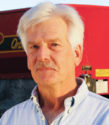Advertise Follow Us
Items Tagged with 'Indiana'
ARTICLES
Conservation Ag Operator Fellowship
Flooding demonstrates the benefits of no-till & cover crops on Conservation Ag Operator Fellow & No-Till Living Legend Ray McCormick’s farm
Read More
No-Till 101
2022 US Census of Agriculture Reports Increase in No-Till Acres, Decrease in Conservation Tillage
Among the wins for conservation reported in the most recent U.S. Census of Agriculture was a 17% increase in cover-cropped acres.
Read More
Ray McCormick Named No-Till Farmer's 2024 Conservation Ag Operator Fellow
Initiative aims to broaden the practical understanding of how growers can find economic and sustainability success through Conservation Ag practices
Read More
Study: Starter Fertilizer Can Increase Yield Potential By 15 Bushels
The Purdue Ag Centers study found while yield increases due to starter 2x2 fertilizer occurred less than half of the time in trials, the potential for increased yield due to starter 2x2 fertilizer as high as 15 bushels per acre makes its use attractive.
Read More
Solar Perils, Profits Await No-Tillers
Ray McCormick says solar and no-till can co-exist profitably, given the right conditions.
Read More
No-Till Farmer Influencers & Innovators
[Video] Randall Reeder and the History of Ridge-Tilling
For this episode of the No-Till Farmer Influencers & Innovators podcast, brought to you by SOURCE®️ by Sound Agriculture, Randall Reeder and Frank Lessiter discuss ridge-tilling.
Read More











